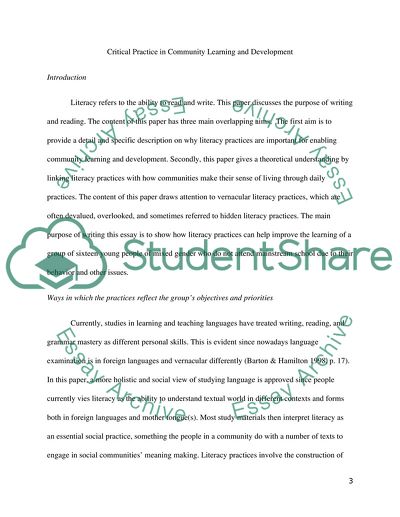Cite this document
(Critical Practice in Community Learning and Development Essay - 1, n.d.)
Critical Practice in Community Learning and Development Essay - 1. Retrieved from https://studentshare.org/education/1624692-critical-practice-in-community-learning-and-development-writing-communities
Critical Practice in Community Learning and Development Essay - 1. Retrieved from https://studentshare.org/education/1624692-critical-practice-in-community-learning-and-development-writing-communities
(Critical Practice in Community Learning and Development Essay - 1)
Critical Practice in Community Learning and Development Essay - 1. https://studentshare.org/education/1624692-critical-practice-in-community-learning-and-development-writing-communities.
Critical Practice in Community Learning and Development Essay - 1. https://studentshare.org/education/1624692-critical-practice-in-community-learning-and-development-writing-communities.
“Critical Practice in Community Learning and Development Essay - 1”, n.d. https://studentshare.org/education/1624692-critical-practice-in-community-learning-and-development-writing-communities.


